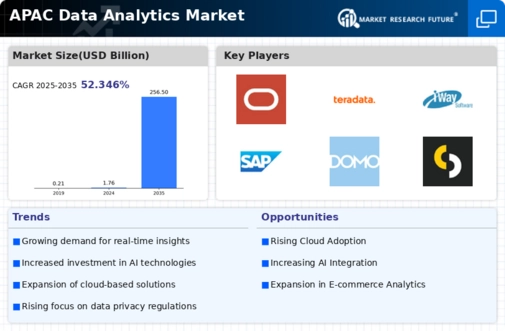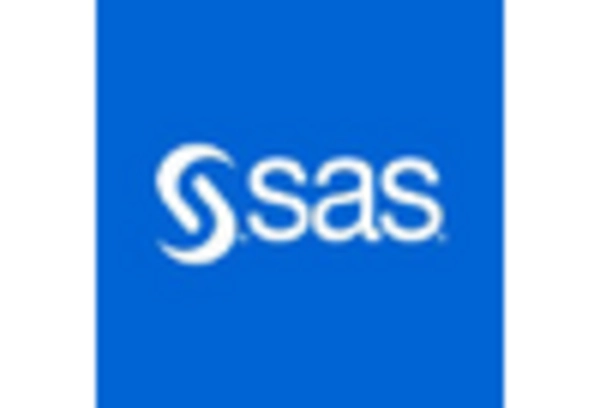China : Unmatched Growth and Innovation
Key markets include Beijing, Shanghai, and Shenzhen, where tech hubs are thriving. The competitive landscape features major players like Alibaba Cloud and Tencent, alongside global giants like Microsoft and IBM. Local dynamics are characterized by a strong emphasis on AI and machine learning applications in sectors such as retail and healthcare. The business environment is increasingly favorable, with startups and established firms collaborating to innovate in data analytics.
India : Emerging Market with High Potential
Key cities like Bangalore, Hyderabad, and Mumbai are at the forefront of this growth, hosting numerous tech startups and established firms. The competitive landscape includes major players like TCS, Infosys, and global firms like Oracle and SAP. The local market is dynamic, with a focus on cloud-based analytics solutions and AI applications. The business environment is conducive to innovation, supported by a skilled workforce and favorable policies.
Japan : Innovation Amidst Stagnation
Tokyo and Osaka are key markets, with a competitive landscape featuring local giants like Fujitsu and NEC, alongside international players like IBM and SAP. The business environment is stable but conservative, with companies often hesitant to adopt new technologies. Sector-specific applications are prevalent in manufacturing and retail, where data analytics is used to optimize operations and enhance customer experiences.
South Korea : Strong Focus on Innovation
Seoul is the primary market, hosting major players like Samsung SDS and LG CNS, alongside global firms such as Microsoft and IBM. The competitive landscape is vibrant, with a mix of established companies and startups focusing on AI and big data solutions. The local market dynamics favor rapid adoption of new technologies, with businesses increasingly recognizing the value of data-driven insights in decision-making processes.
Malaysia : Growing Demand and Investment
Kuala Lumpur and Penang are key markets, with a competitive landscape featuring local firms and international players like IBM and SAP. The business environment is supportive, with government incentives encouraging investment in technology. Local dynamics are characterized by a growing emphasis on data literacy and skills development, which are essential for sustaining market growth in the analytics sector.
Thailand : Focus on E-commerce and Retail
Bangkok is the primary market, with a competitive landscape featuring local companies and international players like Microsoft and Oracle. The local business environment is evolving, with a growing number of startups focusing on data analytics solutions. Sector-specific applications are prominent in e-commerce and tourism, where data analytics is used to drive marketing strategies and improve service delivery.
Indonesia : Emerging Trends in Data Usage
Jakarta is the key market, with a competitive landscape featuring local startups and international players like IBM and SAP. The business environment is increasingly favorable, with a rise in data literacy and awareness among businesses. Local dynamics are characterized by a focus on mobile analytics and customer insights, particularly in the fast-growing e-commerce sector, where data analytics is essential for understanding consumer behavior.
Rest of APAC : Varied Growth Across Sub-regions
Key markets include Vietnam, Philippines, and Singapore, each with its own competitive landscape featuring local and international players. The business environment varies significantly, with some countries experiencing rapid growth while others face challenges in technology adoption. Sector-specific applications are emerging, particularly in finance and e-commerce, where businesses are leveraging analytics to improve operational efficiency and customer engagement.



















Leave a Comment